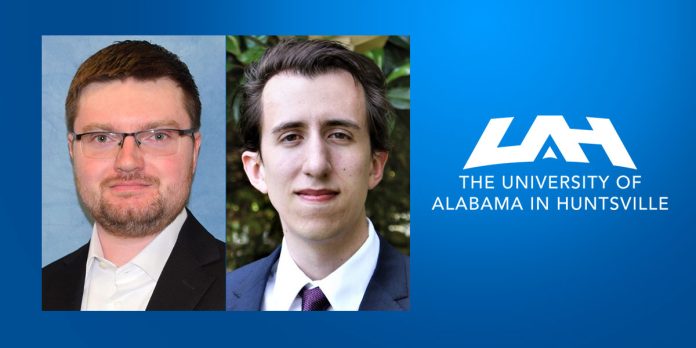HUNTSVILLE – Two researchers at the University of Alabama in Huntsville have published a paper that demonstrates for the first time that a subluminal warp drive is possible within the bounds of known physics without the need to employ exotic unknown forms of matter or energy, while also advancing our understanding of gravity.
UAH alumnus Dr. Jared Fuchs led a team of physicists that produced the paper, supported by Dr. Christopher Helmerich, also an alumnus of UAH, both working in conjunction with the New York-based Applied Propulsion Laboratory of Applied Physics.
When Mexican physicist Miguel Alcubierre first proposed his theoretical warp drive in 1994, the concept required a bubble of “negative energy density” around an object to create an imbalance in space-time, generating motion without movement of the craft, thus avoiding violations of the speed-of-light limit.
But the “Star Trek” dream comes with a catch: it would have to be powered by either exotic particles that haven’t yet been discovered, or the mysterious dark energy thought to drive the expansion of the universe, currently viewed by most physicists as not remotely achievable.
Fuch’s team’s Constant-Velocity Subluminal Warp Drive, however, offers a new means of propulsion that allows it to operate at constant subluminal speeds, while still conforming to Einstein’s theory of general relativity, with no need for “unphysical”’ forms of matter required by previous designs.
“Prior models required a matter-energy content that was ‘unphysical,’ meaning it had features we don’t see in the regular universe, like negative energy,” the researcher said. “Our approach was to avoid needing this exotic matter by adding positive energy to the solution while keeping as much of the warp effects as possible.”
When physicists talk positive energy, they mean phenomena like light, matter and antimatter, all naturally abundant in our universe. And the team also proposes something else that can be used to warp space-time: gravity.
“Gravity in this context means a certain kind of curvature that occurs in space which affects things around it,” Fuchs said. “One feature of regular matter is that it affects things far away from it in space-time – getting weaker to infinity. This is in contrast to most warp solutions, where the warp bubble doesn’t affect things far away at all, only locally around the bubble. In many ways, it is this ‘localness’ of most warp solutions that leads to its unphysical nature.”
Building a gateway to the stars
The first challenge is understanding what makes “warp” happen, the physicist said.
“Contrary to popular discussions, warp doesn’t expand or contract space. Rather, it relies on large amounts of energy moving rapidly around the passenger volume which creates a conveyor belt effect on the inside,” he said. “This energy motion is like a smoke ring, but on the inside of this ring, it can transport passengers along via gravity. If you make this ring of matter move while you modify this conveyor effect, you have a warp drive that transports passengers along space-time,” as shown in this animation, which the team calls ‘warp bubble momentum flux.’
“The black lines indicate the direction of the momentum flow in the warp bubble, while the gray sphere is the passenger volume, which is an empty region on the inside. The white region shows higher density and the blue region lower density.”
The term “subluminal” means the bubble of regular matter would be moving at less than the speed of light, which indicates “it’s not going to solve the Star Trek-like future of rapid transport,” Fuchs said.
“However, this concept still has the warp effect of accelerating passengers without any g-forces using regular matter, which is a unique feature that could lead to other kinds of interesting things,” he said.
“Our approach was to take the features we know that make positive energy and combine them with the features we know that make the warp happen. Together this makes a bubble of rapidly moving matter which is physical.”
Equations involving general relativity are famously difficult to solve, especially in complex cases like a warp drive. To help accelerate the process, the team developed software called Warp Factory to solve the equations and verify they conform to the required energy demands.
“We applied for a warp grant over a year ago and began working with the APL team to develop Warp Factory,” Fuchs said. “This eventually resulted in the tools we needed to discover the solution in the paper.”
The researcher said Warp Factory is a public codebase that anyone can use to recreate a solution or make their own.
Looking to the future to predict whether such a mode of transport will ever become a practical reality, Fuchs said, “it’s hard to know what the timeframe is, but there are many challenges to making warp drives possible. I think we have many years to understand what is possible. The thing with warp is that we are exploring the bounds of general relativity.
“Even if warp drives turn out to be impractical, our understanding could lead to new avenues we don’t know yet.”
Don’t miss out! Subscribe to our email newsletter to have all our smart stories delivered to your inbox.



